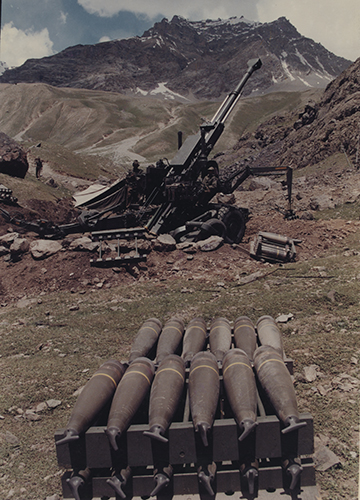THE INDIAN ARMY—the world’s second largest land force—has shifted from defence to offence on the border with Pakistan. The change was in response to a surge in ceasefire violations by the Pakistan army along the 550km-Line of Control (LoC). These violations were a cover for infiltration attempts, says the Indian Army. Intelligence inputs suggest that Pakistan is supporting cross-border infiltration to keep the Kashmir pot boiling, especially after the abrogation of Article 370.
The Army top brass says that India will not hesitate to escalate, and believes that the Pakistan army will not win the escalation race. Therefore, the artillery, including the Bofors howitzers, which were silent for more than 16 years after the 2003 India-Pakistan ceasefire agreement, is back in action. This year, the Army has used its artillery around 450 times against Pakistan. After August 5, when J&K’s special status was revoked, the Army has resorted to calibre escalation at least 172 times (57 in August, 61 in September and 54 in October). Most recently, on October 20, the Army used the 155mm-Bofors howitzers in Tangdhar and Keran sectors to bomb terror launch pads across the LoC.
“We know how to deal with ceasefire violations,” Army chief Bipin Rawat had said on August 30, during his first visit to the LoC after the abrogation. “Our troops know how to position themselves and take action.” General Rawat, who has commanded the 19th Infantry Division headquartered in Baramulla—close to the LoC—has apparently told his troops to be more aggressive in dealing with ceasefire violations.
This year, 2,500 cases of ceasefire violations have been reported from the LoC. There were 1,629 last year and 860 in 2017. “Earlier, Pakistan used to initiate ceasefire violations and we only retaliated,” said a senior Army officer who requested anonymity. “But nowadays, in order to gain an upper hand, we have also started initiating ceasefire violations, so that they (Pakistan army) are also under pressure.” Anything beyond small arms is calibre escalation, he added. The Army headquarters believe that shifting gears has turned out to be a good strategy.
India’s artillery proved its mettle in the last major border conflict—the Kargil War in 1999—and for four more years post the war till the 2003 ceasefire agreement. Retired Colonel Sanjay Pandey, who has commanded the 28th Division of the Army, headquartered in Kupwara—the most intense sector on the border—said the use of artillery as a means of calibre escalation is to gain a position of advantage. A senior officer from the Artillery Corps, on condition of anonymity, said that it was the heavy use of artillery that caused severe losses to the Pakistan army between 1999 and 2003, and eventually brought Pakistan to the negotiation table. “Simultaneous firing from multiple guns caused huge damage,” he said. He added that the Army never allowed the enemy to replenish. “They even failed to stock for winter,” he said. “We had weakened them logistically and forced them to concede.”
An Army officer posted at the border said: “We have respected the ceasefire agreement for a long time. But, now, after the nod from the top leadership, there are no restrictions on any calibre. Local commanders are free to escalate.” It is a clear shift from being reactive to proactive. The routine firing along the LoC involved the use of infantry weapons such as light machine guns, medium machine guns and 81mm mortars. But, after the new directive, the Army has been using 120mm mortars, 105mm field guns (range: 17km), 130mm field guns (22-25km) and the Bofors howitzer (30km). Usually, the calibre used is specific to operations, or sectors and posts targeted.
Additionally, the Army now does not wait for terrorists to cross the border as drones give real-time intelligence on their movement. Retired Lieutenant General Anil Ahuja, an Artillery Corps officer who was deputy chief of the integrated defence staff, said that the use of artillery showed a more fierce and robust response. Artillery firing is level one, firing with medium artillery is level two, and surgical strikes and air-strikes are higher up. But Lt Gen Ahuja warned: “The moment you escalate, you should be ready for an equal response.” He added that though the Army was gaining a position of advantage by the use of artillery, it has to be understood that this is only short-term.


